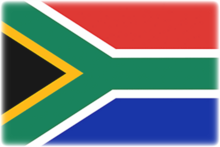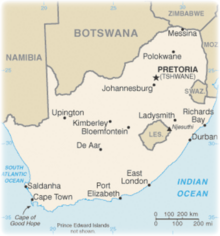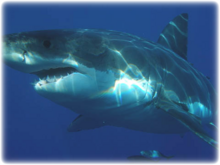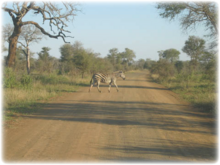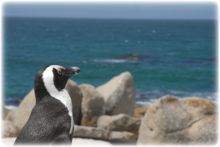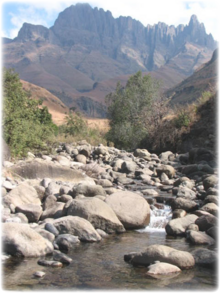
General Information
| Languages : | Afrikaans, English, Southern Ndebele, Northern Sotho, Sotho, Swati, Tsonga, Tswana, Venda, Xhosa, Zulu |
| Currency : | South African Rand (ZAR) |
| Time Zone : | South African Standard Time (+7hrs EST) |
| Capital City : | Pretoria (executive), Bloemfontein (judicial), Cape Town (legislative) |
| Population : | 43.9 Million |
| Government : | Republic |
| Total Area : | 471,010 mi² |
| Climate : | Mostly semiarid; subtropical along east coast; sunny days, cool nights |
| National Holidays: | Freedom Day, 27 April |
| Additional Info: | South Africa contains some of the oldest and most beautiful archaeological sites in Africa. There is no "single" culture in South Africa because of its ethnic diversity. Today, the diversity in foods from many cultures is enjoyed by all. |
Destination Activities
Activity Details
Scuba Diving (Great Whites)
Any shark fan knows the best place to find a Great White is the South African coast, a place best known as "Shark Alley", near the fishing village of Gansbaai. Gansbaai (Afrikaans: "bay of geese," sometimes referred to as Gans Bay) or Big2Town is a fishing village and popular tourist destination in the Overberg District Municipality, Western Cape, South Africa. The island you've seen on all those Discovery channel programs is Dyer Island - a breeding ground of Jackass Penguins, Cape Cormorants and Gannets, while Geyser Rock (a smaller island) is a breeding Mecca for Cape Fur Seals and currently home to approximately 50,000 seals. It is these seals and wildlife that draw the Great White Sharks to the area. Whales and dolphins may also be spotted.
Many local operators offer large boats with cage diving capabilities for the avid shark fan and SCUBA certified (some trips don't even require certification as snorkeling is permitted in the cage area). The sharks are accustomed to the cage viewers and continue to feed around the boat, often even brushing alongside the cage, providing a daring and breathtaking spectacle. Eye-to-eye shark encounters are known to occur and excellent photograph opportunities of open mouthed Carcharodon Carcharias (Latin name for the amazing species) are frequent. Some of the best shark viewing occurs waiting for your turn in the cage from the boat, as Great Whites provide impressive surface action especially when chasing a seal. Day trips including boat and gear can cost approximately $200 (2007). Best time to go is April to October with a 99% success rate of sighting a shark although year round chances are high at this destination.
Trekking
The Drakensberg mountains (Afrikaans: "Dragons Mountain") are the highest in Southern Africa, rising up at Thabana Ntlenyana to 11,422ft in height. In Zulu, they are referred to as uKhahlamba ("barrier of spears"). Many day hikes as well as trekking routes are mapped in this national park.
Sabie (Mpumalanga) - embark into the Fanie Botha Hiking Trails and a 3-day trek that stretches through the eastern escarpment of South Africa. Explore plantations and waterfalls and sleep under the stars.
Western Cape - from the Cederberg mountains to the wild Agulhas coast to the great winelands and the Garden Route, the western Cape is as attractive as it is diverse. This region offers colorful mountain and wilderness trekking journeys through the province but leave enough time to relax and taste the wines. The southern tip of the African continent has been folded into a series of mountain ranges separated by deep, fertile valleys and clothed in a blanket of rich vegetation known as 'fynbos'. From gentle ascents to scrambles up to summits it is beautiful hiking country. Climb peaks, follow gorges and visit rock art caves painted 2,000 years ago. Plan enough time to hike up Table Top Mountain and visit Cape Town before you leave this region.
Ecotourism
Tugela Falls are the world's second highest waterfall. The total drop in five free-leaping falls is 3,110ft. They are located in the Drakensberg in the Royal Natal National Park in KwaZulu-Natal Province. The source of the Tugela River (Zulu for 'sudden') is at Mont-Aux-Sources several miles from the escarpment from which the falls drop. The water is pure and safe to drink above the falls. The most spectacular trail is to the top of Mount-Aux-Sources and starts at the Sentinel car park at Witsieshoek via Phuthadjhaba from where it is a relatively short climb to the top of the Amphitheater. (About 5 hours return). Via two chain ladders you can gain easy access to the summit. This is the only day hiking trail which will take you to the top of the Drakensberg escarpment and to the head of the Tugela Falls.
Kruger National Park is the largest game reserve in South Africa. It is roughly the same size as Wales. It covers 7,332 sq. miles and extends 217 miles from north to south and 37 miles from east to west. The park is part of the Kruger to Canyons Biosphere, an area designated by the United Nations Education and Scientific Organization (UNESCO) as an International Man and Biosphere Reserve (the "Biosphere"). Kruger is home to an impressive number of species: 336 trees, 49 fish, 34 amphibians, 114 reptiles, 507 birds and 147 mammals. Get off the beaten track and traverse territories previously unknown. Anticipate an experience of unforgettable adventure as your skills with a 4x4 determine your success or failure. More than just seeing animals, it is a unique opportunity to access parts of the park that are rarely explored.
Photography
If you have adventure-travel related experience in this region and would like to add content to this page, please contact us to learn how.
